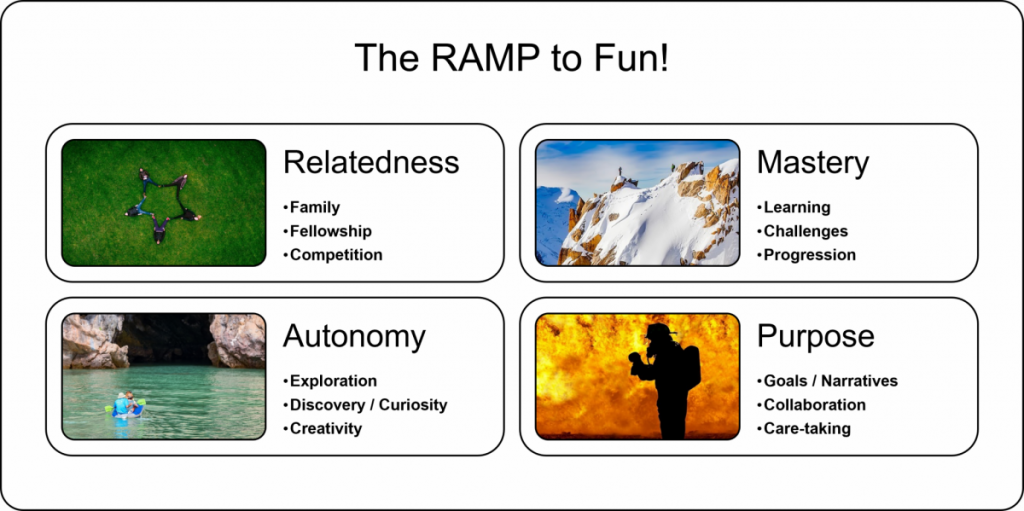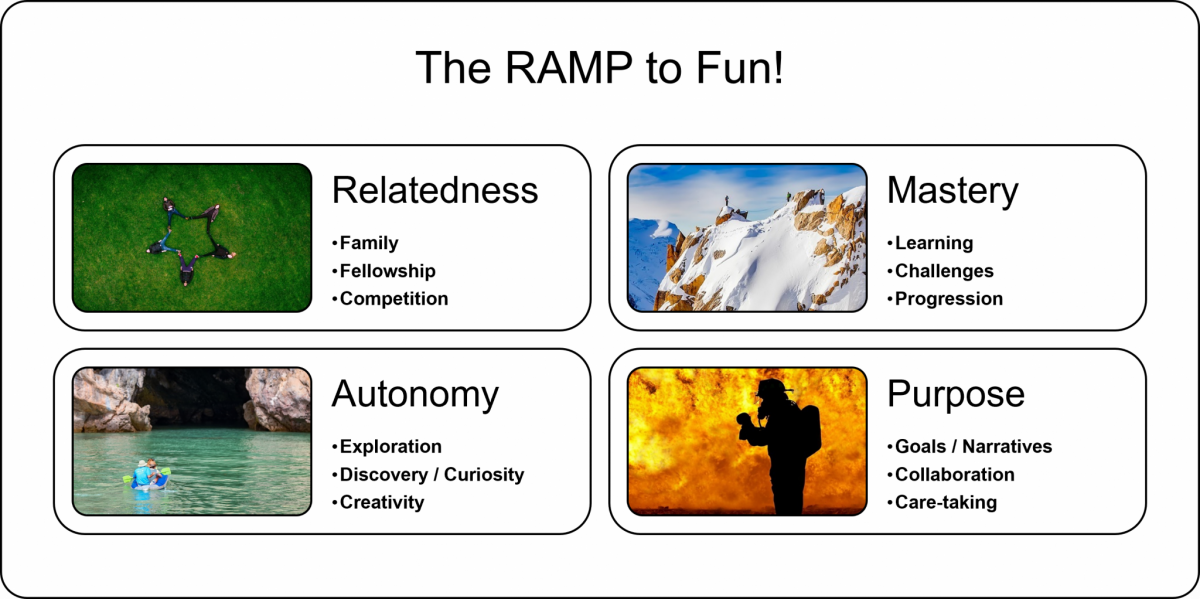A while back I started talking about FUN again. In that post I mentioned the RAMP to Fun, but never actually posted it! So here it is in full PowerPoint diagram glory 😀

This is obviously based on my RAMP, but also on some research I did a long time ago on what people find fun.

The idea is that you need to include elements, mechanics and concepts that people will find fun – even if these do not look fun to you on the surface. As they all hook into core intrinsic motivators – some will find them fun! The more you can link together and embed – in a way that is sympathetic and sensible to the design, the better.
A bit more depth
Relatedness
- Family
- Create experiences that allow a player to include their loved ones.
- Fellowship
- If creating experiences with loved ones is not possible, create environments that lead to strong feelings of fellowship and belonging.
- Competition
- Competition can create string feelings of kinship as you challenge others with similar interests. There is a reason elite athletes are friends with other elite athletes – shared experiences.
Autonomy
- Exploration
- Encourage looking around by making the players environment interesting.
- Provide subtle signposts that the eagle eyed might follow.
- Discovery / Curiosity
- Support exploration by including surprises and goodies that can be discovered as a result of a curious mind!.
- Creativity
- Provide opportunities to allow players to be creative, either in their problem solving or by providing tools to directly affect the world around them.
Mastery
- Learning
- The first step to mastery, is having something to master. Be it direct teaching, or trial and error leading to reward and mastery.
- Challenges
- Don’t make it too easy, create obstacles, provide challenges and encourage failure with solid feedback.
- Achievement feels more intense if worked for.
- Progression
- Create progression paths, where new skills are acquired and required for success.
- Give clear feedback to help measure progress.
Purpose
- Goals / Narratives
- Create clear reasons why you are expecting your players to engage.
- Why are they there, what do they need to do, how will it lead to some greater meaning?
- Collaboration
- Allow players to work together towards a common goal and shared purpose.
- Reward overall teamwork and individual contributions.
- Care-taking
- Provide ways for players to look after others, influencing and protecting them.
- Let players become teachers, helping others learn from their skills.
Similar Posts:
- The Ludic Spirit RAMP – Connecting Intrinsic Motivation to Playful Mindsets
- 5 essential Ps of gamification
- Intrinsic Motivation RAMP Misconceptions
Also published on Medium.

